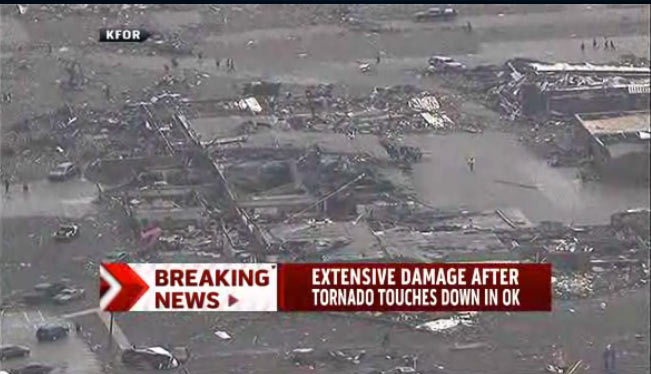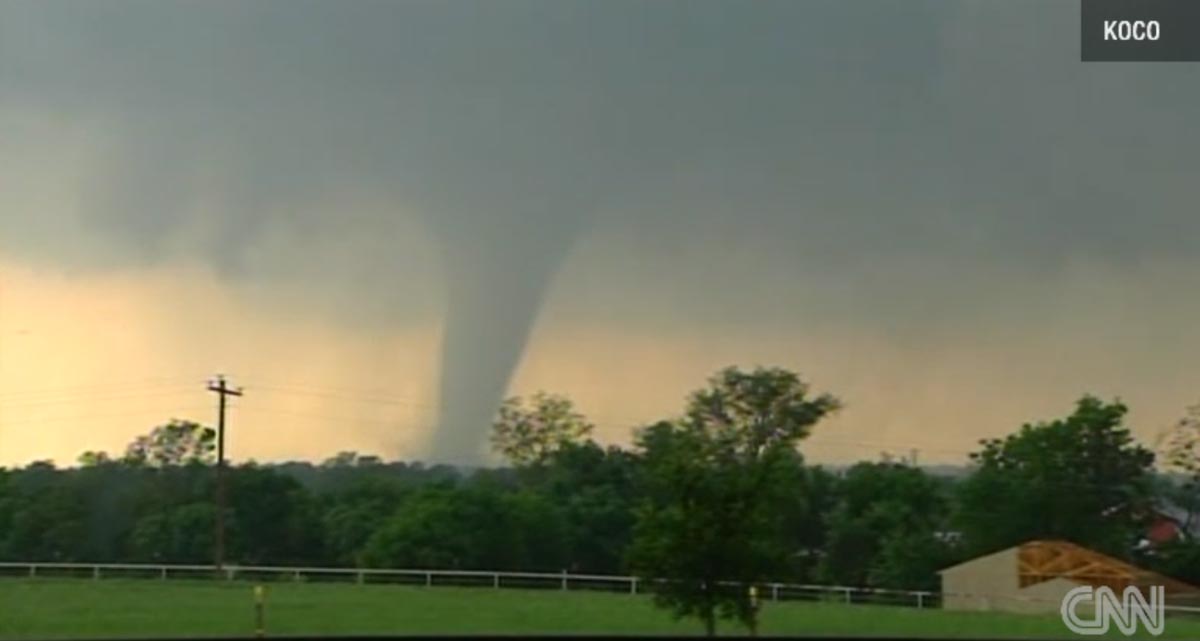Storm Surveyors Hunt for Details of Deadly Moore Tornado

After a deadly tornado ripped through Moore, Okla., and nearby areas yesterday (May 20), a team of highly trained meteorologists will now assess the extensive damage and debris in an effort to determine the severity of the storm.
The local National Weather Service (NWS) office in Norman, Okla., dispatched storm surveyors today (May 21) to evaluate the areas heaviest hit by the tornado. The meteorologists will analyze the debris, looking for clues that will help them reconstruct the tornado’s life cycle, including where it touched down, its top wind speeds and its magnitude, said Todd Shea, an NWS meteorologist based in La Crosse, Wis.
"In a way, it's a bit like being a detective," Shea told LiveScience. "You try to look at all the evidence and put together a puzzle of what you think happened as the tornado moved through."
Examining damage
The huge tornado ripped through the city of Moore yesterday afternoon, leveling homes, schools and other structures in its path. Although there have been conflicting reports of the official death toll, authorities in the state medical examiner's office say at least 24 people have died, nine of them children.
An official evaluation of the tornado's strength has not yet been determined, but meteorologists say yesterday's storm will be at least an EF-4 or possibly an EF-5 on the Enhanced Fujita Scale. A tornado's ranking on the EF-scale is based on wind speeds and associated damage. An EF-0 rating is reserved for minor damage, while an EF-5 is considered the most severe, with winds likely more than 200 miles per hour (322 kilometers per hour).
A tornado can cause different levels of damage along its path, perhaps starting as an EF-2 tornado, then strengthening to an EF-4 later in its life cycle.
Sign up for the Live Science daily newsletter now
Get the world’s most fascinating discoveries delivered straight to your inbox.
Data collected by the NWS survey teams this week will help meteorologists settle on an official rating for yesterday's tornado. [Gallery: Moore Tornado Damage]
"The teams will look at how different building materials are broken apart or damaged, and how foundations might have been impacted," Shea explained. "You look at everything from sturdy buildings to the way vehicles are projected, and you document and photograph it all. Then, the meteorologists will look at what has been collected and work as a team to assign an EF rating."

Quick work
Establishing a tornado's strength on the EF-scale is a subjective process, but the survey team members take into account a number of factors that they cross-reference with a digital list of so-called damage indicators, which act as rough guidelines for estimating wind speeds, said John Cockrell, an NWS meteorologist in Amarillo, Texas.
"If they see something that is representative of one of the damage indicators that's listed in their computer program, they will have a pretty good idea of how to estimate the wind speed that caused the damage they're seeing," Cockrell said.
For instance, a roof that is peeled back from a typical frame house is an indicator of a certain range of wind speeds, while a well-constructed house that is completely ripped from its foundations points to a much higher set of wind speeds, Cockrell explained.
Over the next few days, NWS scientists will also conduct aerial surveys, which will help them gain perspective on the extent of the damage. But combing through the debris on the ground is the most effective way to glean specifics of the tornado's evolution, Shea said.
"One of the things I've found with conducting damage surveys is you typically have to get in there as quick as you can," he said. "Going back to the analogy of the detective, if you're not there early, the evidence can get changed, because people need to start cleaning up and getting on with their lives."
Follow Denise Chow on Twitter @denisechow. Follow LiveScience @livescience, Facebook & Google+. Original article on LiveScience.com.

Denise Chow was the assistant managing editor at Live Science before moving to NBC News as a science reporter, where she focuses on general science and climate change. Before joining the Live Science team in 2013, she spent two years as a staff writer for Space.com, writing about rocket launches and covering NASA's final three space shuttle missions. A Canadian transplant, Denise has a bachelor's degree from the University of Toronto, and a master's degree in journalism from New York University.










